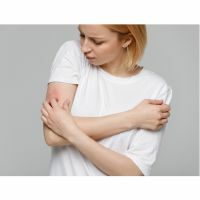Unraveling the Sulfate Story: Why Sodium Lauryl Sulfate should be on your Avoid List
What is Sodium Lauryl Sulfate?
Sodium Lauryl Sulfate (SLS) is a detergent and surfactant found in many personal care products like shampoos, toothpastes, and body washes. It's responsible for the foaming action we associate with cleanliness. SLS is inexpensive to produce, making it a popular choice for many manufacturers.
The Flip Side: Why You Should Avoid Sodium Lauryl Sulfate 
Despite its widespread use, there are concerns about the potential effects of SLS on the human body. Some people report skin irritation, dryness, and even hair loss after using products containing SLS. It's also been suggested that SLS can strip the skin of natural oils leading to disruptions in the skin barrier.
So while a luxurious bubble bath may be enjoyable, if the product contains SLS you may end up with dry, itchy skin, particularly if you are sensitive to SLS.
Sodium Lauryl Sulfate vs. Sodium Laureth Sulfate: A Tale of Two Sulfates
Now you might be thinking, "I've seen Sodium Laureth Sulfate (SLES) on my products. Isn't that the same thing?" Not quite. Although they're often used interchangeably, there are important differences to note.
SLES is a close relative of SLS. However, it goes through an additional processing step - ethoxylation - which makes it less harsh on the skin. The ethoxylation process introduces ether groups into the molecule, leading to a milder detergent effect.
Putting it into perspective, when you wash your hair with a product containing SLES, you'll still get the foaming effect, but there's less risk of your scalp feeling dry or irritated afterward, compared to an SLS-based product.
Making the Switch: Why Sodium Laureth Sulfate is Better
Although SLES can also cause irritation in individuals with very sensitive skin, it's generally considered less irritating than SLS. This is largely because SLES maintains the cleaning properties of SLS without being as harsh on the skin and hair.
However, if you're especially sensitive or prefer to avoid both SLS and SLES, there are other sulfate-free options on the market. These might be a good fit for individuals with delicate skin or certain skin conditions.
Understanding the ingredients
Understanding the ingredients in your personal care products is an important aspect of self-care. This doesn't mean you should fear every scientific-sounding name on the label. Rather, it's about making informed choices that align with your needs and preferences. After all, you deserve to feel good in your skin. So the next time you reach for a personal care product, take a moment to flip it over and read the label. You might just discover something new.
Final Thoughts and Further Considerations
It's important to remember that every person's skin and hair are unique. Some people might tolerate SLS and SLES well, while others could experience irritation or discomfort. Always listen to your body and consult with a dermatologist if you have concerns.
So, what can we take away from the sulfate story? Sodium Lauryl Sulfate, despite being a common ingredient in many products, may not be the best choice for those with sensitive skin or certain skin conditions. Sodium Laureth Sulfate, on the other hand, could be a gentler alternative that still provides the cleaning power we expect from our products.
However, for those wanting to avoid sulfates altogether, there are a plethora of sulfate-free products available that might be a better fit for your skincare and haircare needs.
Posted: Friday 19 May 2023


